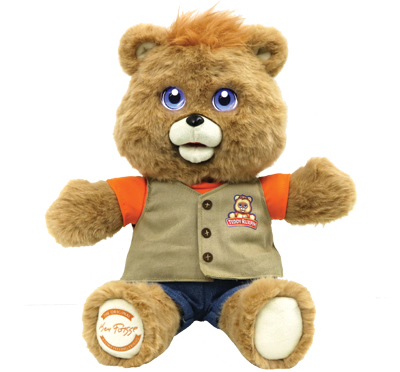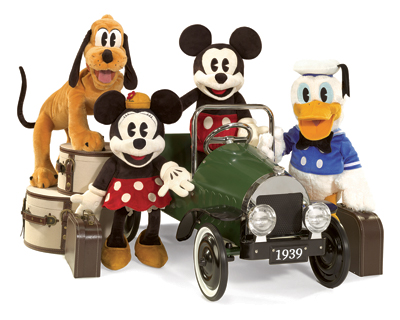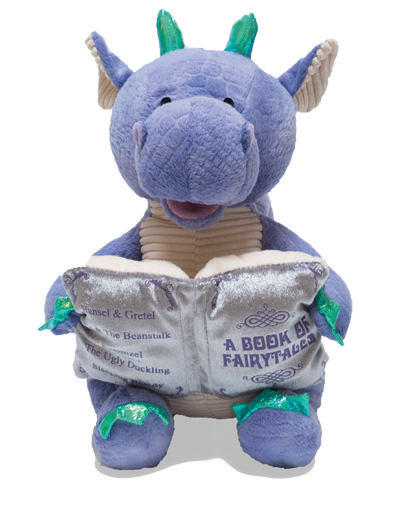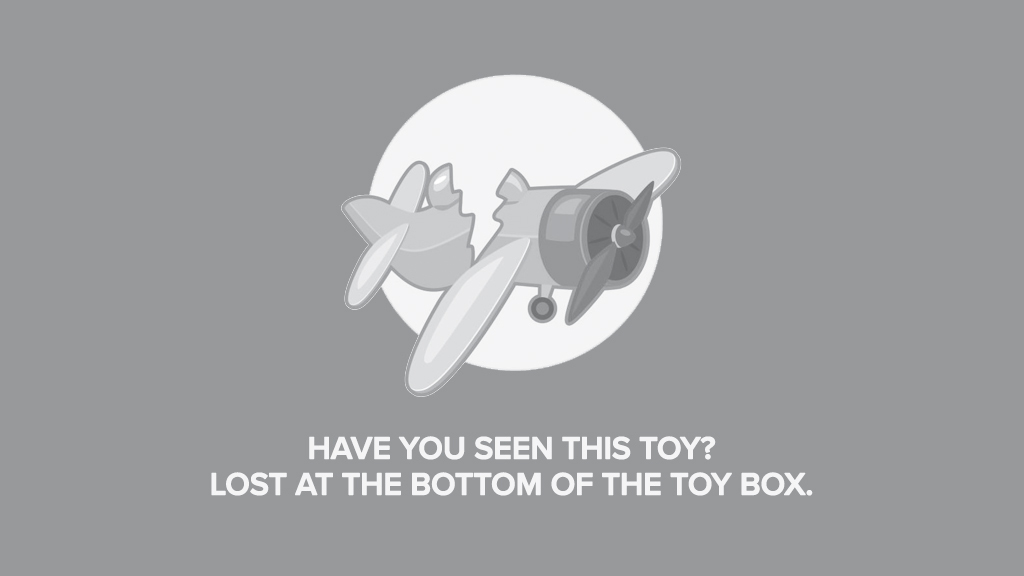How Storytelling Plush Is Sparking Imagination in a New Generation of Kids
Thanks to a backlash against tech-toy overload, classic play is alive and well. Plush is among the most traditional of classic toys, and is reaping the benefits of millennial parents’ desire to reign in the tech, yet still provide innovative and nostalgic toys to their kids.
The plush category grew 6 percent in the 12 months ending this January, outperforming the total toy industry dollar growth of 4.7 percent, according to The NPD Group. The increase is more than double the 2 percent growth in the industry in 2015. In addition, plush grew twice as fast (11 percent) as total toy industry unit growth (5 percent) over the same period last year.
NPD attributes plush category growth to a number of strong new introductions last year. If this trend continues as expected, the plush category will continue to thrive throughout 2017.
Last year, the toy industry saw some of the most innovative and realistic feature plush, such as Little Live Pets Snuggles, My Dream Puppy, from Moose Toys. (Snuggles was also the ninth top-performing traditional toy item ranked in dollars last year, according to NPD.) This year, companies continue to create plush that is driving innovation in the industry, but in ways that are more traditional to the roots of the category.
Storytelling plush are simply toys that read to kids, or ones that kids use to make up their own adventures, fantasies, and narratives. These products aren’t limited to classic low-tech cuddly playthings—some storytelling plush this year have as much technology in them as the mobile devices with which kids are used to playing.

BORROWING FROM HIGH TECH
One of the most anticipated toys of the year is the relaunch of Teddy Ruxpin, from Wicked Cool Toys. After more than 25 years, the plush is making a comeback this fall with modern enhancements and innovations, designed for preschoolers and pre-readers. The original bear featured a motorized mouth and eyes and told stories through a rear-loading cassette-based system that synced to the bear’s speech pattern.
“We approached the family and estate of the creator and founder of Teddy Ruxpin. It’s been the founder’s lifelong mission to bring fun, reading, and storytelling to children,” says Jeremy Padawer, co-president and partner at Wicked Cool Toys. “Ken Forsse, the original inventor, has now passed and this would be a fulfillment of his to see Teddy come back to bring storytelling and instill a life-long love of reading to today’s children.”
The revamped Teddy Ruxpin will read stories to kids with a motorized mouth, just like the original. However, this new version features Bluetooth technology, LCD eyes with more than 40 animated expressions that are synched to the stories (similar to the technology in Wicked Cool’s Cabbage Patch Kids Baby So Real last year), and touch sensors in the hands and vest that allow kids to start, pause, and fast-forward through stories and songs. The bear will include three built-in stories with seven additional stories available through the free app.
“Teddy Ruxpin will be brought to life in the most magical of ways. Baby So Real was based on a nurturing and reality play pattern; Teddy Ruxpin is fantasy,” says Padawer. “Therefore, we were able to bring more fantasy style expressions such as hearts, snowflakes, stars, and much more to complement the exciting story adventures Teddy is sharing with today’s children.”
Kids can play with Teddy Ruxpin in two different modes of play—with or without the app. In addition to accessing Teddy’s library of stories, kids can connect to the app to read along to the story Teddy Ruxpin is telling on their smart device. The app is in-sync with the story, so they can flip the pages as he reads.
Although using the app is an additional feature to keep kids engaged with a story, it is secondary to the plush itself. Kids can take Teddy Ruxpin along for story time wherever they want, without using the app.
REACHING MILLENNIAL FAMILIES
Teddy Ruxpin was first released in 1985 as an original animatronic storytelling bear. At the time, it was the first of its kind, and there’s no denying the popularity of the cuddly bear.
Between 1985 and 1990, Teddy Ruxpin was the top-selling toy, selling 8 million units and 11 million books in 13 different languages. The plush was also the star of a 65-episode animated TV series on air globally for a decade. There were 60 original stories with 10 to 15 new stories released each year over the five-year period.
The new iteration of Teddy Ruxpin truly delves into the market of millennial families. Tapping into nostalgia is an ongoing trend in the toy industry, but now more than ever parents are excited about seeing toys from their own childhood. Teddy Ruxpin will still have the core features that parents and grandparents fondly remember, making them more willing to purchase the toy for their kids to share the experience with them.
“Adults who were kid consumers of Teddy Ruxpin now have children of their own. They are looking for safe, fun, innovative, good-for-you toys as well as shared experiences with their children,” says Padawer. “The original Teddy Ruxpin and today’s Teddy Ruxpin have the same goals for kids: influence the love of storytelling, reading, and fun, up-to-date technology for today’s world.”
Parents have a built-in emotional connection to the brand, and the technological expectations of today’s youngest consumers will be fulfilled.

KEEPING IMAGINATIONS ACTIVE
NPD’s strong numbers in the plush category prove that classic play remains as relevant as ever. Naturally, storytelling is inherent to Folkmanis’ line of plush puppets.
“Folkmanis believes imagination is the key to a healthy childhood, encouraging play and discovery to develop the skills necessary in life,” says Maria Fortez, marketing manager at Folkmanis. “The open-ended play that puppets provide inspires independence, natural curiosity, and creativity. This type of authentic play encourages variation and flexibility as there are no standard rules. Puppet play fosters exploration and diverse and alternate ways of thinking. As citizens of a global community, it is imperative that we nurture these crucial skills from a young age.”
Puppets have an inherent added play value over ordinary plush. They encourage simple, raw play, and kids intuitively start acting things out. Storytelling lends itself to a number of crucial early developmental skills in kids, including listening and communication skills, creativity, and being able to express themselves verbally. Storytelling is the most natural way for kids to engage with their imaginations.
“Kids engage with storytelling plush best when allowed to explore and discover independently,” says Fortez. “Given the opportunity for open-ended play with no rules, a child will instinctively narrate their experience. Children seem to be natural storytellers this way… animating and giving voice to almost anything they find… be it food or fork, action figure or animal.”
This year, Folkmanis introduces four beautiful, classic Disney characters to its collection. Each puppet—Mickey Mouse, Minnie Mouse, Donald Duck, and Pluto—has a 1930s aesthetic, is dressed in a retro style, and stands 22 inches tall.
“It’s been an incredible journey for our design team… perfecting each Disney character’s personality, as well as engineering a quality puppet worthy of the Folkmanis brand,” says Fortez. “We worked with their product development team at each step of the design phase to ensure that the final product remained true to both companies’ visions. Our creative teams worked diligently to produce truly unique and exquisite Disney Classic Character Puppets.”
Folkmanis’ line of the original Disney gang will draw in parents and grandparents, who will be excited to relive their old memories, while making new ones with their kids and grandkids. Like Teddy Ruxpin, parents are excited to share the nostalgic experience.
While licensing is not a focus for Folkmanis, there are a few more Disney and Pixar surprises on the way, according to Fortez.

FINDING OUT WHAT WORKS
No matter what kind of plush companies create, the key is to find what works best for their brand. For Wicked Cool, it’s incorporating high-tech in a traditional play pattern. For Folkmanis, it’s continuing to evolve puppet engineering with complex designs and innovative fabrics.
“In the past, we tried to incorporate high-tech in the puppets with sound chips and we even developed an online-world component to complement our (retired) WebWilds line,” says Fortez. “What we found was that puppets have a unique niche and that they don’t need to be modernized with high-tech gizmos—it just takes away from their play value. We think that when children are challenged to play on their own, without pre-scripted play as found in some electronics, they thrive, discover, and grow. Besides, snuggling with a puppet cannot be replaced with a cold tablet.”
For companies like Cuddle Barn, it has found success with one product and expanded its lines to reflect those achievements.
The company’s roots are in plush gifts for adults and Christmas presents, including plush that sang nostalgic tunes such as “Singing in the Rain” and “Deck the Halls,” according to Mye Hoang, marketing director at Cuddle Barn. Since then, Cuddle Barn has branched into the kids category.
Staying true to its brand, it took one of its most popular kids items—Mother Goose, which recites seven nursery rhymes—and developed more plush items based on that success. New for this year, Dalton the Storytelling Dragon recites five fairy tales, including Hansel and Gretel, Jack and the Beanstalk, Rapunzel, The Ugly Duckling, and Sleeping Beauty. His book features soft color-changing lights as he recites the stories.
“We feel Dalton is the perfect item for a child who has outgrown Mother Goose’s nursery rhymes,” says Hoang. “Kids can listen to their favorite fairytale with Dalton, with the added feature of being able to pause or skip to the next adventure. Dalton ends each story with a follow-up question to stay engaged with the child. He’ll pause to ask what the child thinks of the story, or whether they would have made the same decisions as the characters.”
Cuddle Barn’s line this year also includes Preston the Storytelling Pig, which comes with four finger puppets and recites the full story of The Three Little Pigs. Best of all, it comes packed in a colorful scenic box with illustrated windows and doors, which kids can use to double as a stage for the finger puppets so kids can act out the story.
STANDING THE TEST OF TIME
While there were many key drivers in the plush category in 2016, this year might be even stronger. No matter how saturated the toy aisles are with high-tech toys, plush will never go away. Companies are constantly coming up with new ways to engage kids in classic play patterns, especially storytelling.
“There are so many toys and games on the market, it will always be a challenge to compete. So, the solution is not to compete, but to embrace being different,” says Hoang. “High-tech toys will never go away. Plush has qualities to offer other than entertainment. Plush can comfort and soothe. It can also educate and stimulate imagination. But no matter what, we want our plush to make people smile, and you can’t always say that about all high-tech toys and games.”
Rather than plush competing with high-tech toys, the two types of toys juxtapose each other and grow in tandem with one another, each offering something the other can’t.
“Toy trends come and go, but one thing remains true about traditional play: The best toys are those that actively engage a child mentally, physically, emotionally, and socially,” says Fortez. “Play that is imaginative and unstructured, open-ended and versatile, care-free and fun, not only empowers children through their developmental stages, but also creates long-lasting memories.

